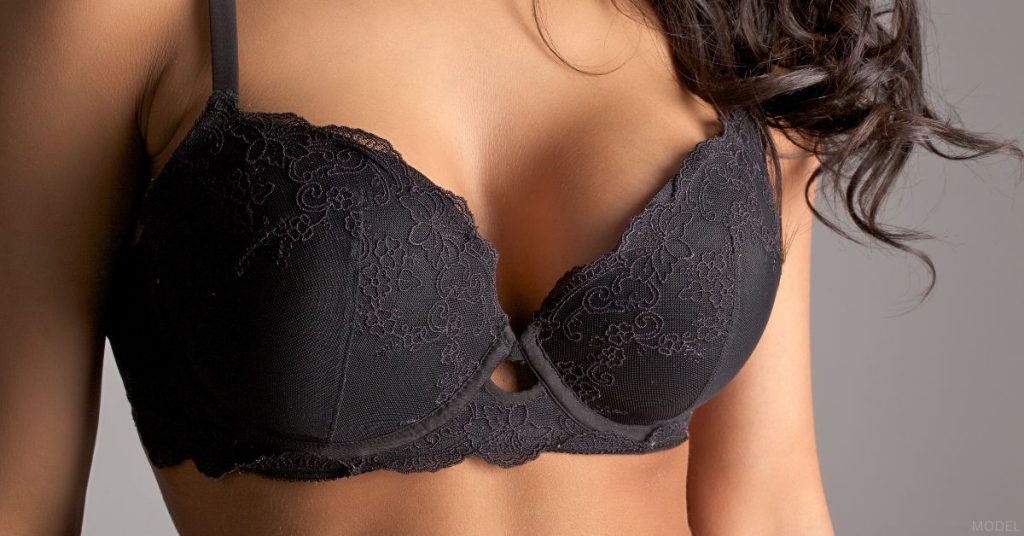If you’re researching fat grafting breast reconstruction, you’ve probably heard how this innovative technique uses your own body fat to enhance breast reconstruction results. At Bedford Breast Center, we specialize in using fat grafting to refine and soften the outcomes of breast reconstruction, helping your results look and feel as natural as possible.
Even with advanced reconstructive techniques, small irregularities or asymmetries can remain, and fat grafting offers a natural way to improve them. While fat grafting isn’t a standalone reconstruction method, it can play an important role in improving symmetry, smoothing contours, and enhancing overall aesthetics.
What Is Fat Grafting for Breast Reconstruction?
Fat grafting, sometimes called fat transfer, involves removing small amounts of fat from one area of your body, such as the abdomen, thighs, or flanks, and carefully injecting it into the breast. Our breast surgeons may use it to blend implant edges or fill small contour irregularities after flap reconstruction, creating smoother, more natural-looking curves.
It is most often performed as a follow-up procedure to refine the results of breast reconstruction. However, some surgeons may incorporate it during the initial reconstruction if added soft tissue coverage is needed.
It’s important to know that fat grafting alone rarely provides enough volume for complete reconstruction. Instead, it’s typically a finishing tool that complements other procedures or corrects contour irregularities.
When Fat Grafting Makes Sense
Our surgeons may recommend fat grafting if you’re looking to:
- Refine the results of implant-based or other reconstruction methods
- Improve symmetry between the breasts after mastectomy
- Soften firmness caused by radiation therapy or scar tissue
- Fill in small divots, indentations, or hollow areas
In each of these scenarios, fat grafting can provide a subtle, natural-looking enhancement that makes reconstruction results more personalized and balanced.
What To Expect From the Fat Transfer Process
During the procedure, your surgeon harvests fat from another part of your body using liposuction. They then purify the fat and precisely inject it into the breast area. Because not all transferred fat cells survive long-term, you may need more than one session to achieve your desired result.
Recovery from the fat grafting itself is typically manageable, with most patients experiencing mild swelling or bruising at the liposuction and injection sites for a few days. Most people resume normal activities within about a week, although this does not reflect the overall recovery timeline for breast reconstruction.
Benefits of Fat Grafting
The appeal of fat grafting is in its versatility and natural-looking outcomes. Some key benefits include:
- Improves breast shape by filling in small irregularities
- Uses your own tissue for a natural look and feel
- Offers the added benefit of body contouring at the donor site
These advantages explain why fat grafting has become such a popular addition to reconstruction.
Safety and Expertise in Managing Potential Complications
While uncommon, fat grafting can occasionally lead to issues such as fat necrosis (firm lumps or oil cysts) or calcifications. Choosing a highly experienced surgeon is the best way to minimize these risks.
At Bedford Breast Center, our team is skilled in diagnosing and treating fat necrosis using minimally invasive, ultrasound-guided techniques. These advanced methods dissolve hardened fat while protecting healthy tissue, helping restore both comfort and a smooth breast appearance.
If you’d like to learn more, we’ve addressed what to do if you have lumps after fat grafting in a related blog post.
Taking the Next Step
Fat grafting has become an invaluable tool in breast reconstruction, offering a natural way to enhance and personalize your results. At Bedford Breast Center, we’re proud to help patients feel more confident and comfortable after surgery.
If you’d like to learn more, call our office today at (310) 278-8590 or request a consultation using the online form.


Leave a Reply